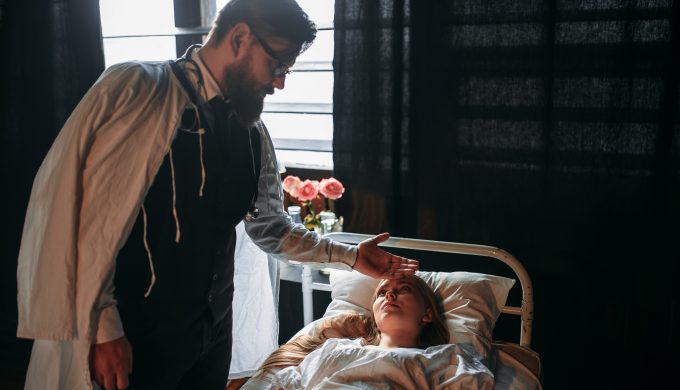Joe Herring Jr. is a Texas Hill Country native from Kerrville who has a passion for writing. On March 14, 2020, an article of his was shared in the Kerrville Daily Times. It pertained to our current situation in which social distancing is the “new normal” and COVID-19 and coronavirus are everyday parts of our vocabulary. However, in his article, he advised that although the situation can often seem bleak, this isn’t the first time that we’ve experienced a pandemic. In a matter of history repeating itself, he reminded readers that there are still “reserves of hope.”
The Spanish Influenza epidemic that hit the Texas Hill Country in 1918 had already swept through the world’s military forces during World War I by the time it reached parts of the Lone Star State. When it hit Kerr County, it was reported in the Kerrville Mountain Sun that a local fellow serving in the Navy had been sent home as a result of his ship experiencing an outbreak of Spanish Influenza, and that many of them were sent home in hopes that they might escape it. At the time that he was sent home, the young man was “thought to be in no immediate danger” and was reportedly going to be up and about. It was the first case of the influenza which was reported in Kerrville. At the same time, the frontpage advice from the National Red Cross, which was provided in the same paper, was to “Wash your hands frequently. Consult the family physician at the first onset of symptoms….” In comparison to today’s pandemic safety tips, they bear a striking similarity.
Photo: envato elements
The following issue of the Kerrville Mountain Sun, dated October 18, 1918, reported that there was “no intention of closing the public schools as yet on account of the few cases of influenza in the community.” The schools later closed. The first reported local death from the Spanish Influenza was reported by the paper on October 25, 1918. By the following month, an article by Father Henry Kemper, of the Notre Dame Catholic Church of Kerrville, that appeared in the Kerrville Times some years later, said that the community was “in the throes of the most malignant epidemic of Spanish Influenza…” Six flu victims from Our Lady of Guadalupe parish, who had passed from their ailment, were buried within a matter of days. At least 36 other cases had been identified. The pandemic had reached this part of the Texas Hill Country in full force.
“At once the Guadalupe School was converted into a free hospital regardless of sex or creed. A rigid quarantine was established, with paid police at all street entrances in to the [neighborhood]. Father Kemper stripped the Rectory of beds and linens; used his Buick as an ambulance; contributed several hundred dollars to furnish groceries for a thousand isolated parishioners in the danger zone; and despite the shortage of nurses in that never-to-be forgotten month, he secured two skilled nurses…” In Herring’s article, he notes a quote from the local press: “The thirty-three men, women and children whose life seemed doomed in the Guadalupe School at once showed signs of recovery. No new cases arose in the neighborhood. After ten days and nights of anxious watching, the two Sisters of Charity of the Incarnate Word were able to dismiss the last flu patients, and to let their fellow-nuns resume class work as soon as the public schools were permitted to open,” it was reported.
Photo: envato elements
Following this test of Kerrville’s will, then Mayor H.C. Geddie wrote an expression of the debt of gratitude the city owed to the Sisters of Charity of the Incarnate Word. Dr. Palmer and Mrs. Louis A. (Mae) Schrieiner (the latter of whom helped with the children) were also given great praise in recognition of their efforts in the pandemic. It’s a reminder that in times of great need, there are ways and means of making it through. In times of great community fear and disbelief, kindness and generosity can prove to be tools of unfathomable healing and support in a pandemic. That even though the grim parts of our history can be repeated, so too can the positive ones.





